Technically Heckler & Koch haven’t really released the HK233 yet. It’s “just there” on their homepage and they forgot to tell the marketing department to send out the press release.
But as we found out about the HK233 (5,56 NATO) and HK237 (300BLK) there were various people posting both in Facebook groups and at HKPro about the patent behind the rifle.
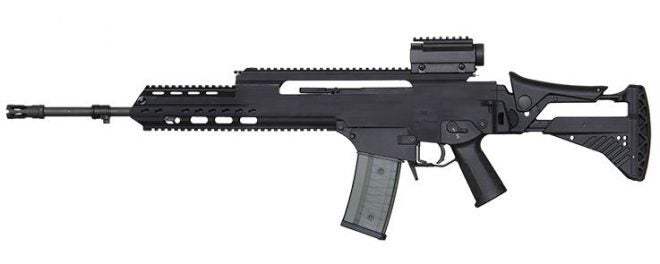
HK233
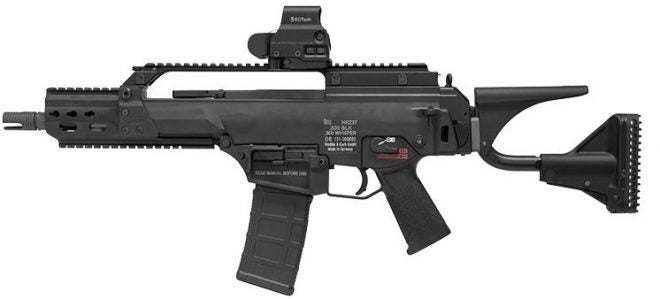
HK237
“Patent” isn’t a language I speak, especially combined with German. I learned that a long time ago, but there were some very interesting drawings that made more sense.
The patent from Heckler & Koch Gmbh was described as: “Adapter for mounting at least one additional device to a self-loading firearm, and equipped with this self-loading firearm”
and furthermore:
“The invention relates to an adapter (3) which is adapted for mounting at least one additional device (45) to a self-loading firearm (1), extends in weapons longitudinal direction, and having a tube side (25) and a housing-side (35) section. The adapter (3) is characterized in that it with one of its two portions (25; 35) on a holding device (79, 89) on the tube (19) or on the housing (4) can be fixed, and (with the other portion 25; 35) on the housing (4) or tube (19) by means of a longitudinally movable guide (96, 97, 109; 177, 179, 181) is movable storable. The invention also relates to a self-loading firearm (1) an adapter (3) according to one of claims 1 to 19, a holding device (79, 89) on the tube (19) or housing (4) for fixing the adapter (3), and a movable bearing on the housing (4) or tube (19) which is adapted to be longitudinally movable guide of the adapter (3).“
So this new patent is most likely HK’s solution to a problem that never officially existed (Source), but it’s fixed now with the HK233. The HK233 is a G36 Version 2. At least it’s one way of looking at it, I’m sure there are other ways.
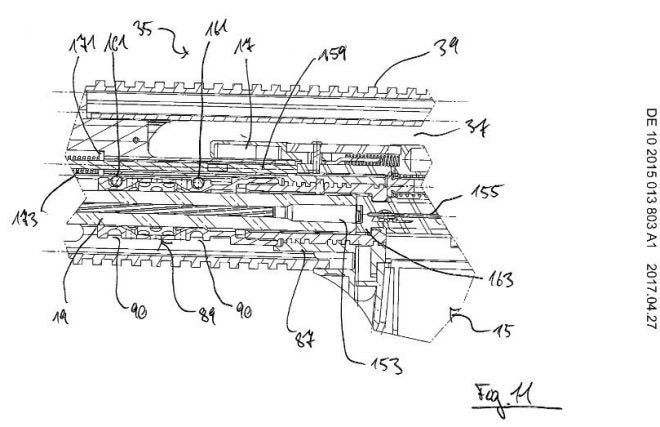
“If, for example, the tube emits heat to the housing during heat firing and expands or distorts it, which could occur, in particular, in the case of plastic housings, Or if the tube itself thermally warps, the additional device – largely because of the special adapter bearing – will be largely spared from tensions thus caused.”
You can find the sources of the Patent here:
https://encrypted.google.com/patents/DE102015013803A1?cl=en
and here:
The pictures and figures are from the sources mentioned above.
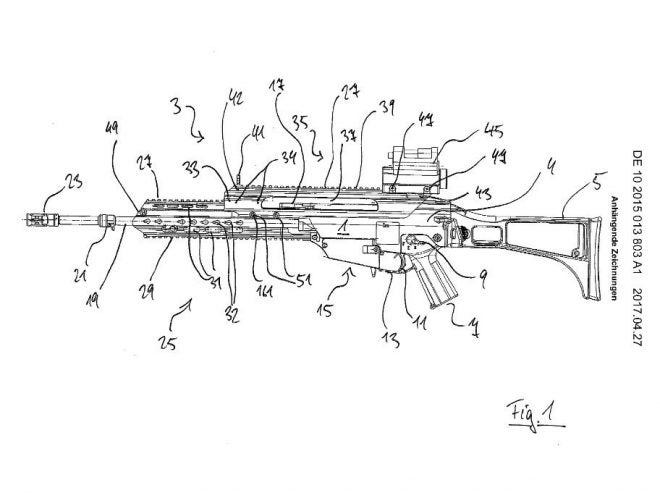

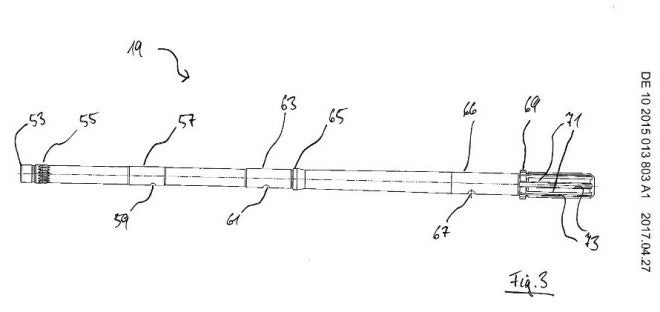
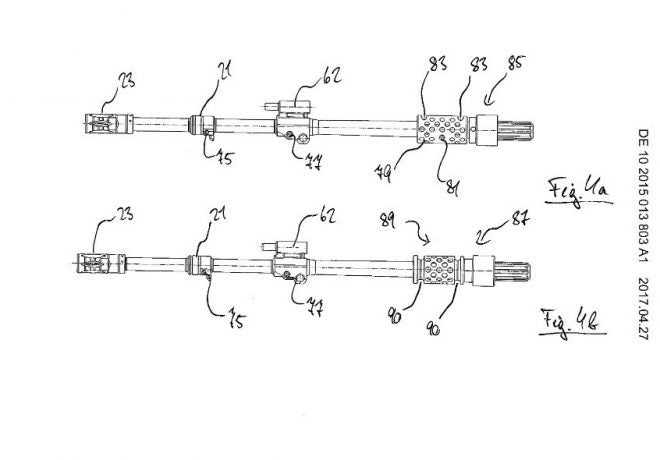
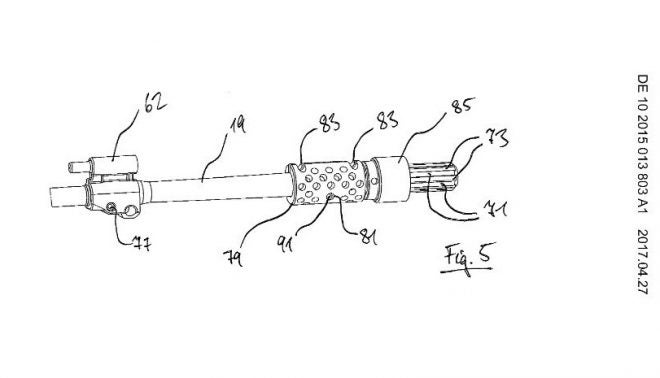
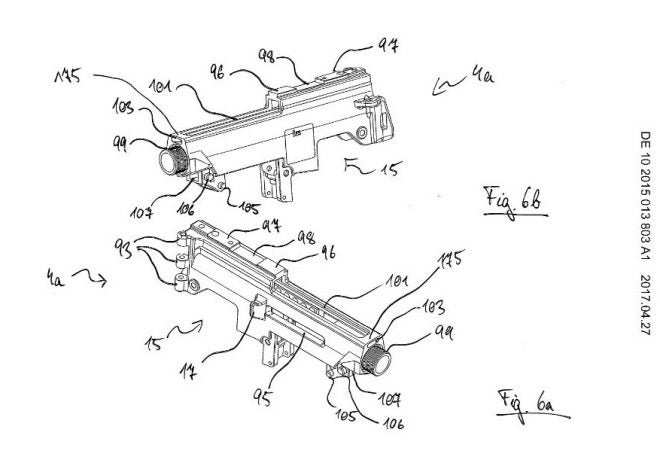
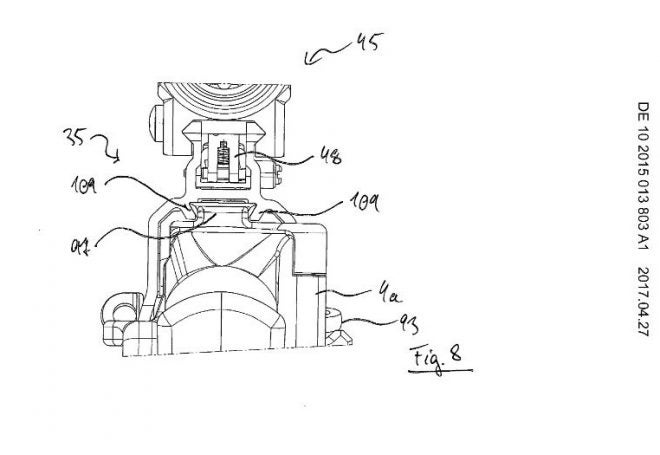
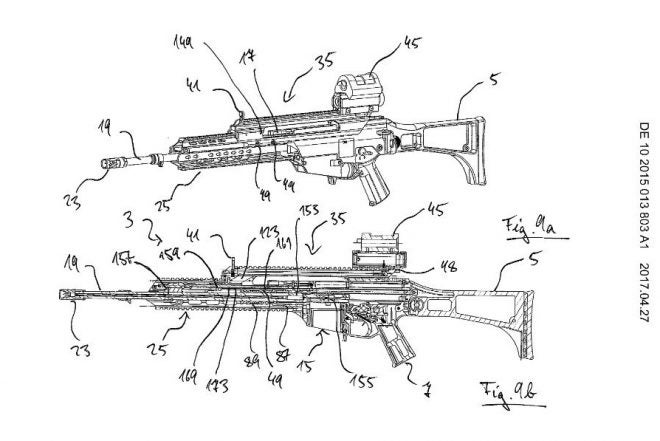
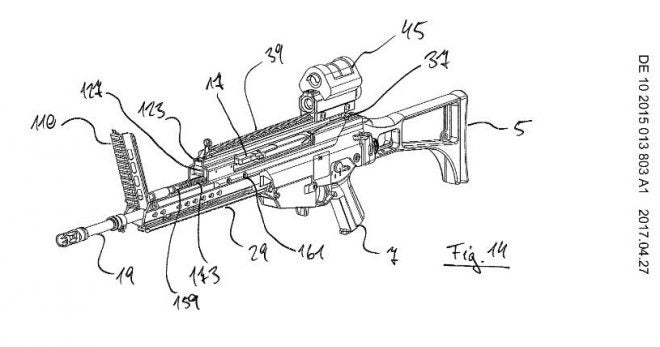
Look at the drawing above, N# 110. I think this design is interesting and worth discussing. If you look at the LWRC IC-A5 Individual Carbine the solution looks very similar, where you open or remove a lid to service the piston. There might be more rifles out there, with this solution?
If you add the knowledge, that a few Special Units have left / are leaving / are transferring from the H&K G36 to the LWRCI it becomes a bit ironic.
Here are two examples TFB recently reported about: https://www.thefirearmblog.com/blog/2017/04/21/lwrci-swedish-police/ and https://www.thefirearmblog.com/blog/2016/11/29/swedish-sog-special-police-units-get-lwrc-rifles/
The below picture is from the LWRCI IC Manual.
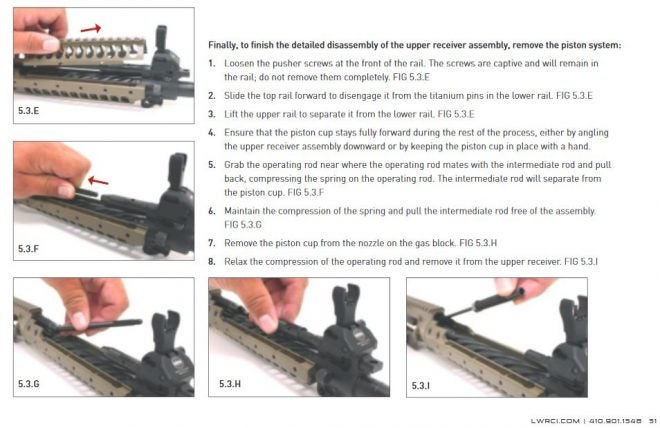
You can check LWRCI IC-A5 on the homepage for reference: https://www.lwrci.com/p-329-ic-a5.aspx.
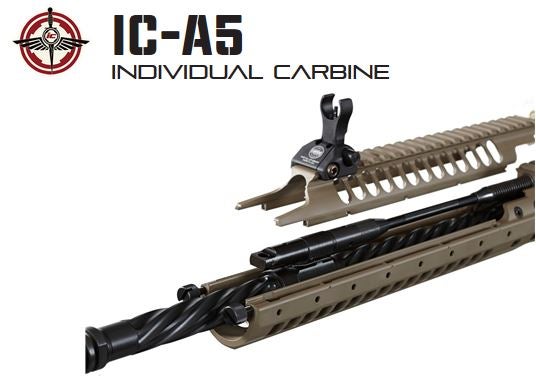
I have never seen the HK233, but my question is how reliable is HK’s design?
Will a laser (or similar) keep mounted on the lid keep it’s zero?
That’s a question a lot of HK’s customers are going to ask themselves (or find out, too late).
The parts are called “110 cover” and “119 hinge pin”, and by the looks of it I wouldn’t place a laser there.
Note where LWRC put their front sight.
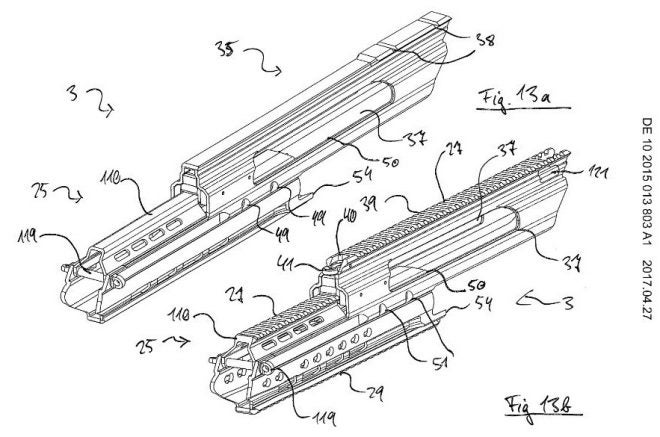
You also get a very short line of sight with your back-up iron sights, you’re only using about half of the potential length.
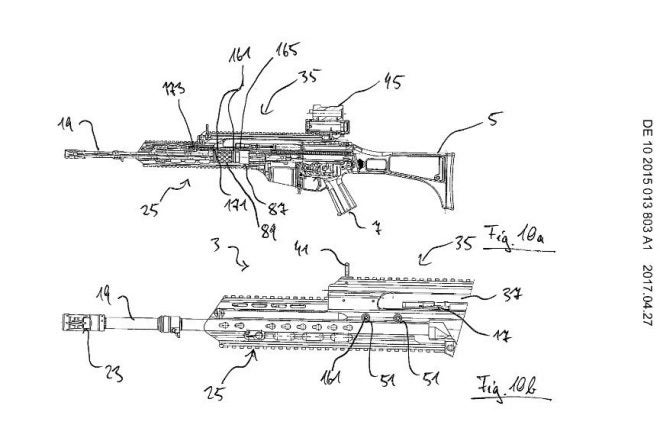
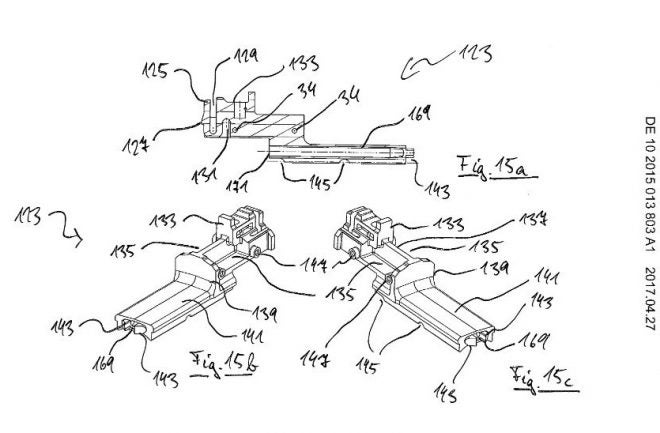
These list describe the content, and translated (from German) below. Yes, a machine translated it from German in case you some odd technical translations.
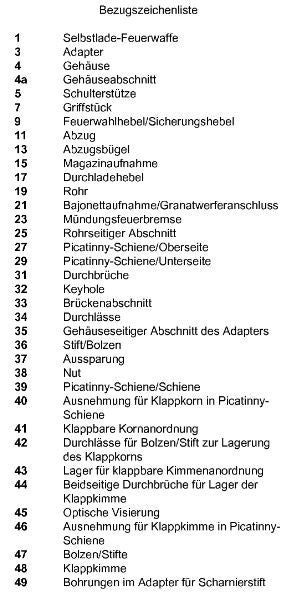
LIST OF REFERENCE NUMBERS
1 Self-loading firearm
3 adapter
4 casing
4a housing section
5 buttstock
7 grip
9 Fire selector lever / safety lever
11 deduction
13 trigger guard
15 magazine holder
17 Cocking lever
19 pipe
21 Bayonet recording / grenade launcher connection
23 Muzzle brake
25 Pipe-side section
27 Picatinny rail / top
29 Picatinny rail / bottom
31 breakthroughs
32 Keyhole
33 bridge section
34 passages
35 Housing-side portion of the adapter
36 Pin / bolt
37 recess
38 groove
39 Picatinny rail / rail
40 Recess for folding grain in Picatinny rail
41 Folding grain arrangement
42 Passages for bolt / pin for supporting the folding grain
43 Camp for folding rear sight assembly
44 Bilateral breakthroughs for storage of the folding rear sight
45 optical sight
46 Recess for folding rear sight in Picatinny rail
47 Pin / pins
48 folding rear sight
49 Holes in the adapter for hinge pin
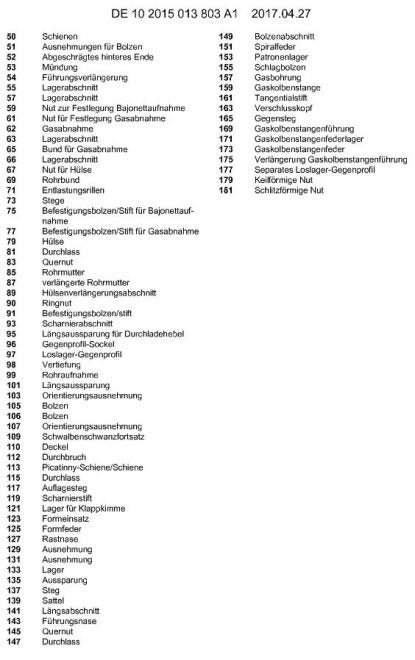
50 rails
51 Recesses for bolt
52 Sloping rear end
53 mouth
54 guide extension
55 bearing section
57 bearing section
59 Groove for defining the bayonet receiving
61 Groove for determining gas consumption
62 gas purchases
63 bearing section
65 Federation for gas purchases
66 bearing section
67 Groove for sleeve
69 pipe Length
71 relief grooves
73 Stege
75 Fastening bolt / pin for receiving bayonet
77 Fastening bolt / pin for gas consumption
79 shell
81 passage
83 transverse groove
85 tube nut
87 elongated tube nut
89 Sleeve extension section
90 ring groove
91 Fastening bolt / pin
93 hinge section
95 Longitudinal recess for cocking lever
96 Counter-profile socket
97 Non-locating counter profile
98 deepening
99 tube support
101 longitudinal recess
103 Orientierungsausnehmung
105 bolt
106 bolt
107 Orientierungsausnehmung
109 Dovetail extension
110 cover
112 breakthrough
113 Picatinny rail / rail
115 passage
117 support web
119 hinge pin
121 Camp for folding rear sight
123 mold insert
125 shaped spring
127 locking lug
129 recess
131 recess
133 camp
135 recess
137 web
139 saddle
141 longitudinal section
143 guide nose
145 transverse groove
147 passage
149 bolt section
151 spiral spring
153 Chamber
155 firing pin
157 gas well
159 Gas piston rod
161 Tangentialstift
163 bolt head
165 against Steg
169 Gas piston rod guide
171 Gas piston rod spring bearing
173 Gas piston rod spring
175 Extension gas piston rod guide
177 Separate non-locating counter profile
179 Wedge-shaped groove
181 Slit-like groove
End of Patent.
I have very little experience with the G36, but I do have experience shooting rifles fairly successfully. And I have a lot against the design which is now repeated in the HK233:
You have a barrel. On top of this barrel you mount a piston and a charging handle. On top of the piston you put more metal (or polymer), then you add some sort of carrying handle where you put your optic. On top of the optic you put another optic. Yes, I’m aware that all G36s don’t come with optics like pictured below, but even with a normal specification you have a sight line which is very high above the bore, and you are forced to compensate a poor design with cheek welds.
You don’t have to build a skyscraper to build a rifle.
The G36C shows what I mean. I’m sure it goes bang every time, but there’s room for improvements in other areas to make it easier to hit the target.
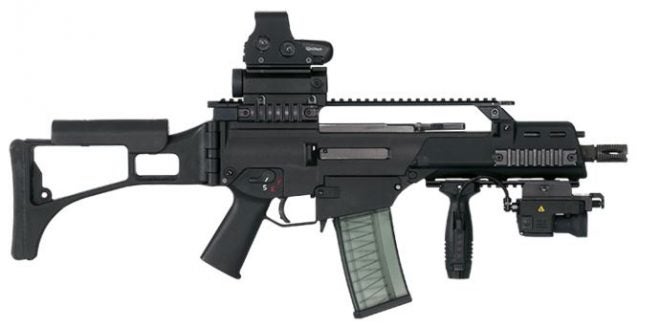
G36C, with lots of extras above and under.
 Your Privacy Choices
Your Privacy Choices